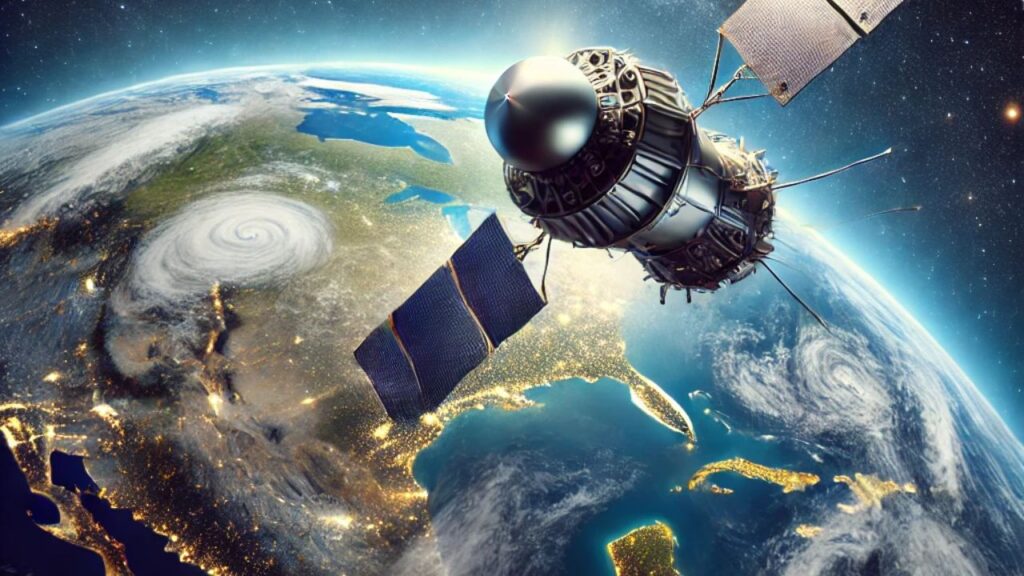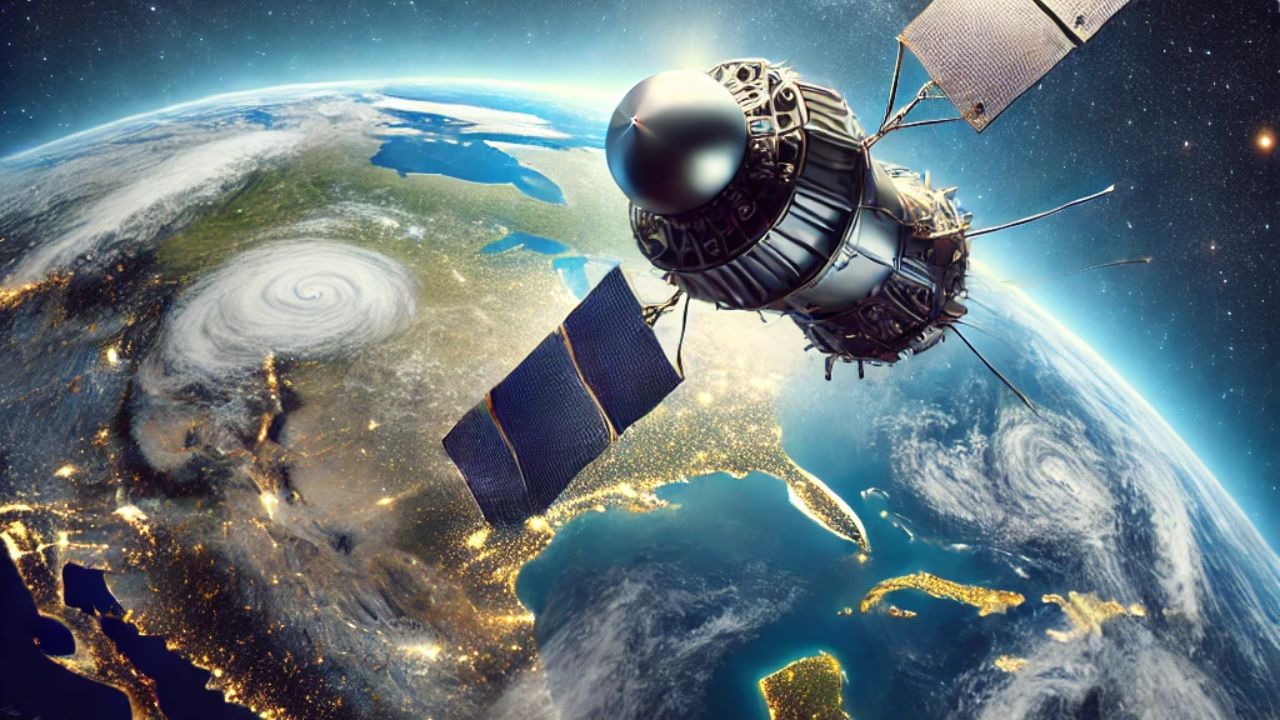NASA Lockheed Martin, GeoXO satellite program, NOAA, geostationary satellites, environmental monitoring, space technology, weather forecasting, climate research
NASA has chosen Lockheed Martin to develop the next-generation GeoXO satellites for NOAA. This $2.27 billion contract aims to advance geostationary environmental monitoring, providing critical data for weather forecasting, ocean monitoring, and climate research. Discover how this collaboration will enhance our understanding of Earth’s environment.

NASA Selects Lockheed Martin to Build Next-Gen Spacecraft for NOAA
In a significant advancement for space technology and environmental monitoring, NASA, acting on behalf of the National Oceanic and Atmospheric Administration (NOAA), has selected Lockheed Martin Corporation of Littleton, Colorado, to construct the spacecraft for NOAA’s Geostationary Extended Observations (GeoXO) satellite program. This development marks a pivotal moment in the evolution of geostationary satellite systems, promising enhanced capabilities for weather, ocean, and climate monitoring.
Contract Details
The cost-plus-award-fee contract awarded to Lockheed Martin is valued at approximately $2.27 billion. This substantial investment covers the development of three primary spacecraft, with options for four additional spacecraft. The contract’s duration includes 10 years of on-orbit operations support and an additional five years of on-orbit storage for each spacecraft, making a total performance period of 15 years. The project will be executed at Lockheed Martin’s facility in Littleton, Colorado, and NASA’s Kennedy Space Center in Florida.
GeoXO Constellation
The GeoXO constellation will comprise three operational satellites positioned east, west, and central within a geostationary orbit. Each satellite will be three-axis stabilized and designed to host multiple instruments critical for environmental monitoring and data collection. The centrally located spacecraft will be equipped with an infrared sounder and an atmospheric composition instrument, along with the capacity to accommodate a partner payload. The satellites in the east and west positions will feature an imager, lightning mapper, and ocean color instrument, as well as support an auxiliary communication payload for the NOAA Data Collection System relay, dissemination, and commanding.
Contract Scope and Responsibilities
The scope of the contract involves a comprehensive array of tasks necessary for the successful deployment of the GeoXO satellites. This includes the design, analysis, development, fabrication, integration, testing, and evaluation of the spacecraft. Lockheed Martin will also provide engineering development units, maintain ground support equipment and simulators, and support mission operations at the NOAA Satellite Operations Facility in Suitland, Maryland.
NASA and NOAA play integral roles in the GeoXO program. NOAA funds and manages the program, ensuring the operational aspects and data products meet the nation’s needs. NASA, in collaboration with commercial partners, oversees the development, launch, testing, and operation of the satellites. This partnership ensures that the GeoXO satellites are equipped with the latest technology to meet future environmental monitoring challenges.
Advancing Earth Observations
The GeoXO satellite system is designed to advance Earth observations from geostationary orbit, providing crucial data to address environmental challenges. These observations will support weather forecasting, ocean monitoring, and climate research in the United States. The advanced capabilities of GeoXO will enable a better assessment of the changing planet and cater to the evolving needs of data users. The mission’s goal is to ensure that critical observations are in place by the early 2030s, coinciding with the end of the operational lifetime of the current Geostationary Operational Environmental Satellites – R (GOES-R) Series.
Historical Context and Future Implications
The GeoXO program builds on the legacy of the GOES-R Series, which has been instrumental in providing critical environmental data for weather forecasting and monitoring. The GOES-R Series has significantly improved the accuracy and timeliness of weather predictions, contributing to the safety and preparedness of communities across the Western Hemisphere. The GeoXO satellites are expected to enhance these capabilities further, offering more detailed and frequent observations.
By continuing to innovate and expand the capabilities of geostationary satellites, NOAA and NASA are not only advancing scientific understanding but also ensuring that the United States remains at the forefront of environmental monitoring technology. The data provided by the GeoXO satellites will be vital for emergency response, disaster management, and long-term climate research, ultimately contributing to the protection of life and property.
Technological Innovations
Lockheed Martin’s involvement in the GeoXO program underscores the importance of leveraging cutting-edge technology in spacecraft development. The company’s expertise in satellite engineering and space systems integration is crucial for the success of this mission. The spacecraft will incorporate advanced sensors and instruments, capable of capturing high-resolution imagery and detailed atmospheric data. These technological advancements will enable more precise monitoring of weather patterns, ocean conditions, and atmospheric composition.
The inclusion of an infrared sounder and atmospheric composition instrument on the central spacecraft is particularly noteworthy. These instruments will provide detailed information on atmospheric gases, temperature, and humidity, which are essential for understanding weather patterns and climate change. The lightning mapper on the east and west satellites will enhance the ability to detect and monitor severe weather events, such as thunderstorms and hurricanes.
Collaborative Efforts
The GeoXO program represents a collaborative effort between government agencies and private industry. This partnership model has proven effective in advancing space technology and delivering critical capabilities to meet national needs. By combining the resources and expertise of NOAA, NASA, and Lockheed Martin, the program is well-positioned to achieve its objectives and deliver high-quality data to support a wide range of applications.
The collaboration also extends to the operation and maintenance of the satellites. NOAA will manage the operational aspects, including data processing and dissemination, while NASA and Lockheed Martin will provide technical support and maintenance. This integrated approach ensures that the satellites remain operational and capable of delivering accurate and reliable data throughout their lifespan.
Looking Ahead
As the GeoXO program moves forward, it will be essential to maintain a focus on innovation and continuous improvement. The rapid pace of technological advancements in satellite engineering and environmental monitoring presents both challenges and opportunities. By staying at the forefront of these developments, the GeoXO program can continue to provide valuable insights and support informed decision-making on environmental issues.
The successful deployment and operation of the GeoXO satellites will mark a significant milestone in the evolution of geostationary satellite systems. These next-generation spacecraft will play a critical role in enhancing our understanding of the Earth’s environment and addressing the challenges posed by climate change and natural disasters. The data collected by GeoXO will support a wide range of applications, from weather forecasting and climate research to disaster response and resource management.
In conclusion, NASA’s selection of Lockheed Martin to build the next-generation spacecraft for NOAA’s GeoXO satellite program represents a major step forward in environmental monitoring and space technology. This collaboration will deliver advanced capabilities to support weather, ocean, and climate operations in the United States, ensuring that critical observations are in place for the future. With a focus on innovation and excellence, the GeoXO program is poised to make significant contributions to our understanding of the Earth’s environment and the protection of life and property.
Read More
- NASA Voyager 1 Resumes Science Operations: Exploring Interstellar Space
- Anticipating the Spectacle: NASA and Global Astronomers Await Rare T Coronae
- Exploring the Sun Mysteries: NASA Discovery of Aurora-Like Radio
- Odysseus Moon Lander Reveals Earth Technosignatures: What Aliens Might See










